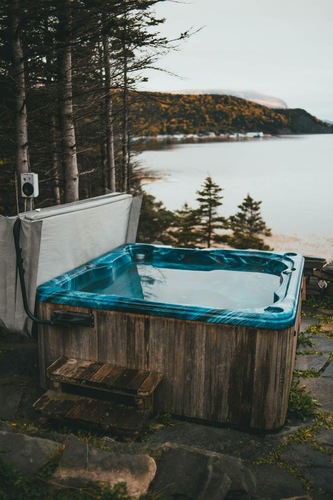Whether it is for relaxing with friends on weekend getaways or having a dip at the end of the day, hot tubs are made to be enjoyed.
Regular maintenance will help ensure that your sauna is clear and prepared for leisure. It is nevertheless necessary for all owners to regularly maintain their hot tubs by adding chemicals to the water. Even though they are not needed for regular water maintenance, there are several chemicals for hot tubs that you must always have on hand.
In your sauna, which chemicals are necessary? It is advisable to have sanitizer, a substance that acts as a metal sequestering substance, and products that alter both pH and total alkalinity on hand.
Analyzing the chemical makeup of the water is part of keeping the water quality in hot tubs high. It’s essential to check the water quality before using the sauna.
Chemical Storage in Hot Tubs
The best place to store the spa’s additives is wherever you can easily access them. If accessing the chemicals appears difficult, you won’t take as much care to keep your water clean.
To preserve both your health and security and the effectiveness of your belongings, there are a few advised habits.
- If at all possible, choose a cabinet or container that can be raised off the ground and secured. Consider putting in a water-resistant cabinet with shelves that complement your garden’s design.
- Maintain their dryness and chilly. Hot tub chemicals are meant to dissolve in water, so it’s important that they don’t mix with other items or get wet. If you live in a hot climate or your backyard gets a lot of sunlight, maybe a detached garage might be a better option.
- Hold onto them inside the original package. Verify that you are able to get to the manufacturer’s instructions.
- Make sure the chemicals are locked away or out of reach of kids.
Which Chemicals Do Hot Tubs Require?
It is preferable to be prepared even if you expect to never have a water issue at a spa. You may need to wait twenty minutes after taking your bath for the substances in the sauna to fully activate.
That is preferable to having to skip it or making an unplanned trip to Watson’s of Dayton spa supplies to buy hot tub chemicals, though.
Items to Modify pH
Why is acidity essential, and what does it mean? It displays the water’s “basic” or acidic qualities in your hot tub. The fluid needs to be neutral to be acceptable to soak in. Low pH might damage the spa and irritate the skin. A high pH has no effect and irritates the eyes and skin.
Non-Chlorine Shock
Like chlorine, oxygen is released into the water by a startling agent. The sum is increased by shocking the water. For a short while, the chlorine level was higher than advised. The process sanitizes the water and removes impurities like bacteria and chloramines.
Agent Ordering
You can use a sequestering agent to remove calcium and heavy metals from your water. If there are metals or minerals in the water of your hot tub, the water may become an unsightly shade of brown, bright red, orange, or green.
Whenever the water inside your hot tub turns shades of red, orange, brown, and green, it’s time to add a sequestering agent. It’s also very important to add a conserving agent to the water in your tub.
The three major components needed to keep a hot tub in good working order are pH increaser, pH decreaser, and sodium dichlor chlorine granules.
Sanitizer
Germs and bacteria might get into your hot tub. water as guests goes from the outside of the spa into the interior. A sanitizer maintains the water balanced and safe to use. Chlorine or bromine can be applied.
Defoamer
For a brief while, this product will reduce foamy sauna water. Why does water in a hot tub foam? The reasons include often lotions, beauty products, body oils, and various other products.
By having a shower before entering the hot tub and by adhering to a water maintenance schedule, you may prevent frothy water. Nonetheless, it could be a good idea to have a defoamer available, especially if you are hosting a party.
Calcium
Calcium hardness will be examined along with the chemical composition of the water in your sauna. You can find out how much calcium and magnesium (https://ods.od.nih.gov/factsheets/Magnesium-Consumer/) are in the water by measuring it.
But if this isn’t balanced, the water in your hot tub could seem foamy or muddy. Furthermore, you can observe scale buildup or, even worse, the deterioration of metal components. A calcium hardness increaser plus a decreaser should be combined with the chemicals in their sauna.



